The first necessity felt by the poet is apparently to use his words as indices of time.
—T.S. Omond, A Study of Metre
It’s been to the detriment of poetry as an art that it has largely abandoned meter. Although there is still good work being done (Steven Knepper recently launched the
to great acclaim) the public’s primary relationship to poetry is still through that of free verse.This is a shame, because for so long poetry has used meter to great effect. According to Owen Barfield1, the metrical line is the oldest technique in all of literature. He believed meter to be the consequence of an original, intimate connection with Nature and with consciousness.
Nature herself is perpetually rhythmic. Just as the myths still live on a ghostly life as fables after they have died as real meaning, so the old rhythmic human consciousness of Nature (it should rather be called a participation than a consciousness) lives on as the tradition of metrical form.2
Meter was our first contact with Nature and with consciousness. Indeed, before we could fit words to sense, we heard rhythm, the rhythm of the people around us speaking. As infants we desired to find a pattern in what they said, a regularity by which we could make sense out of things. Our parents helped us along by speaking to us in patterns. They made alliterative sounds. Ba-ba. Ma-ma. They sang to us in nursery rhymes using all manner of tones.
And the regularity inherent in the metrical line is an attempt by the first peoples on Earth to make sense of their words. The poets did great things with it. Poetry made use of meter to great effect until about only a century ago.
Poets largely abandoned it because it had become too rigid. It was overoptimized. It became a failure of its own success. Robbed of that original rhythm, it was replaced by an artificial one over centuries of refinement. Our greatest poets rightly discarded it because it had become lifeless and mechanical. They turned instead to free verse, to be able to say things in such a way that they would once again feel alive.
But meter, though forgotten, is not entirely without its value, and we poets ignore it to our great disadvantage. Indeed, it is one of poetry’s greatest strengths, one of the things that sets it apart as an artform. Not only is meter the foundation upon which other musical techniques in poetry are built, it possesses, by virtue of its regularity, a narrative authority which is sorely lacking in contemporary poetry today. It restores a sense of objectivity to poetry, and for an art that has been swallowed up by subjectivity, this should come as a welcome salve.
On Free Verse Today
Who has not struggled to grasp the meaning of a poem in a contemporary journal or academic press? And certainly not for lack of effort. The most common complaint among the general public leveled against poetry is its inaccessibility. Impenetrable, esoteric, solipsistic, inconclusive. It’s no coincidence that such frustrations correlate with the advent of free verse in modernism and the abandoning of regularity and unity in verse. Why spend time reading a poem when there’s a good chance you’re not going to get anything out of it, only the sound of words gusting by like senseless wind?
At this point some poets might reply, quite paternally, that the reading public should practice reading more carefully, or they should try to exist in the “unreason” of the poem. “It doesn’t have to make sense,” they say. “It’s about feeling.”
I once got into an argument on Twitter with a well-known poet (a T.S. Eliot Prize-winner) about the value of practicing form in poetry. They implored me to free myself from such limiting constraints, that poetry was ‘much bigger’ than that. So big, in fact, that there really was no definition of a poem at all. A bag of dirt, he claimed, was a poem.
Of course, being a poet, he was speaking figuratively. But he was speaking figuratively in such a way that his figure held no meaning.3 Such is the case with much of poetry today, that by ascribing to its nature absolute freedom, it becomes untethered to anything like meaning. Is it any wonder why the general public simply ignores what goes on in poetry? Those that do read find they are not able to say much about a poem besides “That one really moved me,” or “How powerful, how deep.” For if poetry is merely expression4 then it has reduced itself to being read by only the most emotional and least serious readers. Hence the rise of Instapoetry outside of academia.
And if I were not already a casual consumer of poetry, why wouldn’t I listen to a song instead, or go see a movie? Such artforms still attract a general public partly because there is still an implicit agreement between the audience and the artist. You know to some degree what you’re going to get when you play a song or watch a movie or read a novel. And no successful artist in those fields would dare claim that their art were no different than a bag of dirt. Only in poetry do our prizes go to those who see no craft in what they do, and no need to practice anything beyond ‘feeling their feelings.’
Has Poetry Outgrown Meter?
It could be reasonably argued that perhaps the craft of poetry has evolved beyond the need for meter, and that this is a natural progression of the art away from a primitive technique. Barfield, in Poetic Diction, claims that poetic language, over time, comes to favor prose over verse.5
As the Aryan languages develop, the quantitative values, which gave a rhythm to some extent inherent in the language itself, decay, while accent, which is much more a determination of the material part of language by the speaker’s own peculiar meaning, arises in their stead. Now the decay of the quantitative values leaves us with prose, but, on the other hand, the rise of accent brings us—music.6
Barfield, I believe, is referring to the difference between quantitative and qualitative languages, the former of which constructed their verse based on the length of vowels, while the latter on the stress of syllables. It’s Barfield’s contention that such quantitative languages as Ancient Greek and Latin were concerned only with rhythm, while qualitative ones like English evolved a more complex aesthetics of sound.
Music may be distinguished from rhythm by the increasing aesthetic value of sound, as against mere time, and, unlike rhythm, it is not an instinctive element in early speech.7
His theory of early languages aside8, I’m sure Barfield would’ve agreed that the aesthetic values of qualitative languages today aren’t entirely unconcerned with such time-keeping rhythm, and that the “increasing aesthetic value of sound” does not necessarily exclude a consideration of time, just as music today, though it has become increasingly complex, has not disregarded beats and time signatures.
Meter, as the essential element of verse, is an invaluable tool in the poet’s repertoire. It is indispensable, although today it is mostly misunderstood. Abandoned for having become too rigidly prescribed, it succumbed to a scientivism which analyzes into oblivion. In its attempts to understand the specimen under a microscope, it dissected and mutilated through experimentation and categorization. And yet, despite all this, a genuine understanding of meter has hardly been exhausted. There is still much it can teach us as poets, much that is worthy of practicing and preserving that the counting of syllables on fingers cannot teach.
What is Meter?
“When a line ceases to be rhythmical it ceases to be verse.”
—Omond, A Study of Metre
We readily accept that poetry is a unique sort of speech. It is heightened language, ornate and set apart from regular language. Poetry is figured language. It is language whose primary purpose is to figure, to form in the imagination those things that would make reality apparent, clear, and meaningful.
One of the ways that poetry figures language is through sound. The alliterative line, the refrain, the rhyme scheme. There are many kinds of patterns, and poetry uses them, among other reasons, to give pleasure, to reinforce, to impress, to remember.
Meter is the pattern given to the poem as a whole. It is the measure of its lines such that, when reading, one recognizes an underlying regularity which fosters uniformity.
Most would claim this regularity is the result of the pattern of stressed and unstressed syllables the poet employs. Lines are grouped into units of feet, and a foot contains two or three syllables. The iamb, the trochee, the dactyl, the anapest. There are others, but these are the most important. Traditionally in English meter, lines are determined by the number of stresses (accents), or the number of syllables, or both.
Meter bestows rhythm as a result of this regularity, this measured repetition. It suggests by its measure a pace, a cadence, a style, a voice. It conditions the reader to take up the poem in a particular way. The 20th century critic and scholar Charles Williams called this conditioning “ostentation,” and said that it was the essential characteristic of verse.
In verse the reader is deliberately referred to a chosen measure; in prose he is not so referred. That reference—whether it be to the normal decasyllabic line of traditional blank verse, or any one among our innumerable stanzaic forms, or the couplet, or even to a deliberate irregularity—is made known to him by the verse itself, and is ostentatiously insisted on by the verse itself. The ostentation is a part of the verse. It is a necessary part of verse that one line should be a vivid conditioning of the next, and that on arriving at the next, the reader should remain vividly aware of that past power thus conditioning him.9
The conservation of measurement across lines is meter. And while many types have been identified, yet little is understood about the general principles of rhythm in prosody. What we study in school, the complicated names of various forms of meter10, the scansion of lines marking stressed and unstressed syllables, while useful, are but the results of the overanalysis of verse that turned away poets in the 20th century. They are the findings of scholars and theorists, and while they may have their uses, they lack an understanding of those elementary principles that a general public both intuits when reading and desires in the art of poetry. The Scottish literary critic T.S. Omond (1846–1923) was perhaps the first to diagnose the problem early in the 20th century.
Scientific study of our verse-forms, indeed, has not been neglected. Both in England and America, during the last thirty years especially, much very valuable analysis has been made of phenomena and their grouping. But it is contained in treatises written by scholars for scholars, concerned more with points of detail than with general laws. Metrical effect depends on certain broad principles, simple in conception (for a child can enjoy verse), yet capable of endless elaboration and development at the hands of accomplished singers. In considering the latter aspect we have, perhaps, somewhat lost sight of the former. No building is secure without a good foundation. The most complex, and refined, and specialized theories of verse-structure stand or fall by compliance with certain plain, elementary, fundamental truths.11
If students encounter meter at all in their education, it is still primarily by rote classification and memorization of specialized verse-structures. They are given the scientific names but taught nothing more meaningful about them aside from the fact that iambic pentameter was the meter used by Shakespeare and that it sounds ‘bouncy.’
I learned these things in my primary and secondary education, and while in the former it’s somewhat forgivable (you have to start somewhere) in the latter it suggests a dearth of imagination and attention to the craft. Studying poetry in grad school, and taking several workshops throughout my college career, I never once encountered the topic of meter beyond learning to identify the forms of certain poems.12
It’s understandable why, if regrettable. For the last hundred years meter has been mostly forgotten except by a small subset of poets (a niche of a niche) because its style has been assumed to be too stultifying, its rhythms no longer enlivening speech but rarifying it. But this is not the fault meter. Rather, the method of its instruction, as well as a lack of understanding of its general laws, has relegated the form to obscurity.
This is a shame, because there’s much that meter still has to teach us, and much we have yet to understand about rhythm and its effects on us.
What Measure Should Be Taken?
In his work, Omond does much to revive the study of meter by drawing out general principles beyond counting syllables and marking stresses. Indeed, he proposes that the proper unit of measurement is neither the stress nor syllable but the “period” which underlies and informs all other metrical devices.
Measurements are held to depend on time-periods rather than syllables, while the function of accent becomes mainly directive and illuminative.13
The proper way to scan a poem, according to Omond, is not to count the syllables or stresses to infer the meter of a poem, but to first “discover its time-measure, and then consider the relation of syllables to time.”14 This reorientation turns us from mere counters back into genuine listeners of poetry, for the time signature of the line is not the same thing as the uniform pattern of accent or syllable.15
All metre really depends upon time. In some literatures its function is more clearly marked, more readily distinguished, than in ours. Hence it has been possible for critics to ignore its workings, to speak as if the connection of syllables in our verse depended on arithmetic instead of on temporal movement. No rational, no adequate, scansion can be based on such notions. English metre is not rightly interpreted till we recognize time-value of periods as its indispensable foundation, and their uniform recurrence as the condition of its rhythm.16
By reframing the unit of measurement to time, Omond returns the study of meter to the ear, which has always been the proper study of prosody. The great poets who practiced meter knew this17, and in a sense what Omond puts forth in his book is not new. But it helps clear up a lot of the confusion that often arises when we study meter as the academics and scholars do.
Disagreements about how to properly scan a line, where the stress should fall according to the supposed meter, the awkward elisions that must be forced upon lines to make them fit. Learning meter in this way, one is struck by how downright unmusical it seems. Like Procrustes’ bed, it chops and vivisects in order to make lines conform to theory, and not the other way around. And when poets forced their lines into such artificial schemes, it’s no wonder why the modernists moved on to free verse and prose.18
But Omond returns to an understanding of meter that is intuitive and acquired by listening to and not rigidly systematizing poetry.
Temporal periods, usually occupied by syllables, and habitually denoted by stress, must be regarded as the true basis of our verse; and the part thus assigned to stress or accent is sufficiently important. This, however, is not its only function. Our poets also use it in countless delicate ways, which almost defy analysis and laugh to scorn our pedantry of nomenclature, to give subtlety and grace and variety to their verse.19
Unlike feet, periods account for the variability of stress and syllable count, as well as for pauses which no stress or syllable occupies.20 Omond’s “periodicity” also accounts for a progression of accent (what he calls an increase in pressure) as opposed to a traditional understanding of accent as binary (stressed/unstressed).
We Neglect Meter to Our Disadvantage
Whether or not Omond’s theory of meter is correct (it’s certainly more useful for advanced poets) the fact that poetry has largely abandoned meter, and disregarded such techniques, is to the detriment of poetry as a craft.
As I’ve argued elsewhere, if poetry is to be valued as an artform, it must differentiate itself from other kinds of writing. It must demonstrate its necessity by virtue of that which makes it unique and indispensable as a craft. Certainly one of the ways that it does this is by its “ostentation,” by the way verse and not prose conditions the reader by the measure of each line.
To ignore this capacity inherent in poetry is to draw upon only a portion of that artistic tradition. That meter has, in the past, grown unwieldy and artificial in its conception does not mean that it holds no value for us in the future. After all, it was by harnessing such rhythms that we first drew sense from sound.
In life it is no doubt wise to be very careful that we do not attempt to impose too easy and repetitive a pattern on the vast of experience. But we cannot avoid beginning with some kind of pattern, however we vary and alter it, otherwise we should not know anything.21
What an attention to meter offers is an invitation to reclaim something essential about the nature of poetry, so that we may someday enjoy the works of the future as we enjoy now the works of the past, that is, by appreciating the fullness of their poetical powers.
We cannot say that poetry is true except in the sense that we say that love or religion or any philosophy is true. But we can say that in its fullness there is no mightier experience—and few as mighty—known to man.22
A fellow Inkling, Barfield was the philosopher among the group that included Tolkien and C.S. Lewis.
Poetic Diction. Wesleyan. p 146-7.
Or else its meaning is deprecating. Unknowingly this poet demeaned his own art for the sake of maintaining his ridiculous position.
A misunderstanding or at least a gross reduction of what the Romantics were up to.
For a summary of the difference between poetry, verse, and prose, see a previous post.
Poetic Diction. Wesleyan. p 150. [his italics]
ibid. [his italics]
His is the prevailing view among philologists, although it’s certainly not a settled one.
“The Ostentation of Verse.” Reason and Beauty in the Poetic Mind. Wipf & Stock. p. 3.
Iambic pentameter, trochaic tetrameter, dactylic hexameter, to name a few.
from his introduction to A Study of Metre (1903).
My focus being modernist poetry, I accepted the common narrative that meter was a tool that was once used to help poets memorize lines, but that such a device was no longer necessary.
from the introduction again.
ibid. p 85.
Omond claims that there are two basic time signatures in poetry, which he calls duple and triple metre. They correspond to the traditional idea of two and three syllable feet. But unlike feet, such periods account for the variability of stress and syllable count, as well as for pauses in which no stress or syllable is occupied.
A Study of Metre. p 16.
“A dunce like myself measures verse […] by ear and not by finger.” —Swinburne
There is in fact always a ‘calcifying’ of verse going on. Just as the modernists rebelled against the austerity of the Victorians, so did the Romantics rebel against the ornate, artificial verse of the Augustans. Eliot once remarked: “Every revolution in poetry is apt to be, and sometimes to announce itself to be a return to common speech.”
A Study of Metre. p 31.
Omond believes such pauses are built-in to metrical lines, and so any theory of meter that does not or cannot account for them is a flawed one.
Williams, Charles. “The Ostentation of Verse.” Reason and Beauty in the Poetic Mind. Wipf & Stock. p. 10.
ibid.


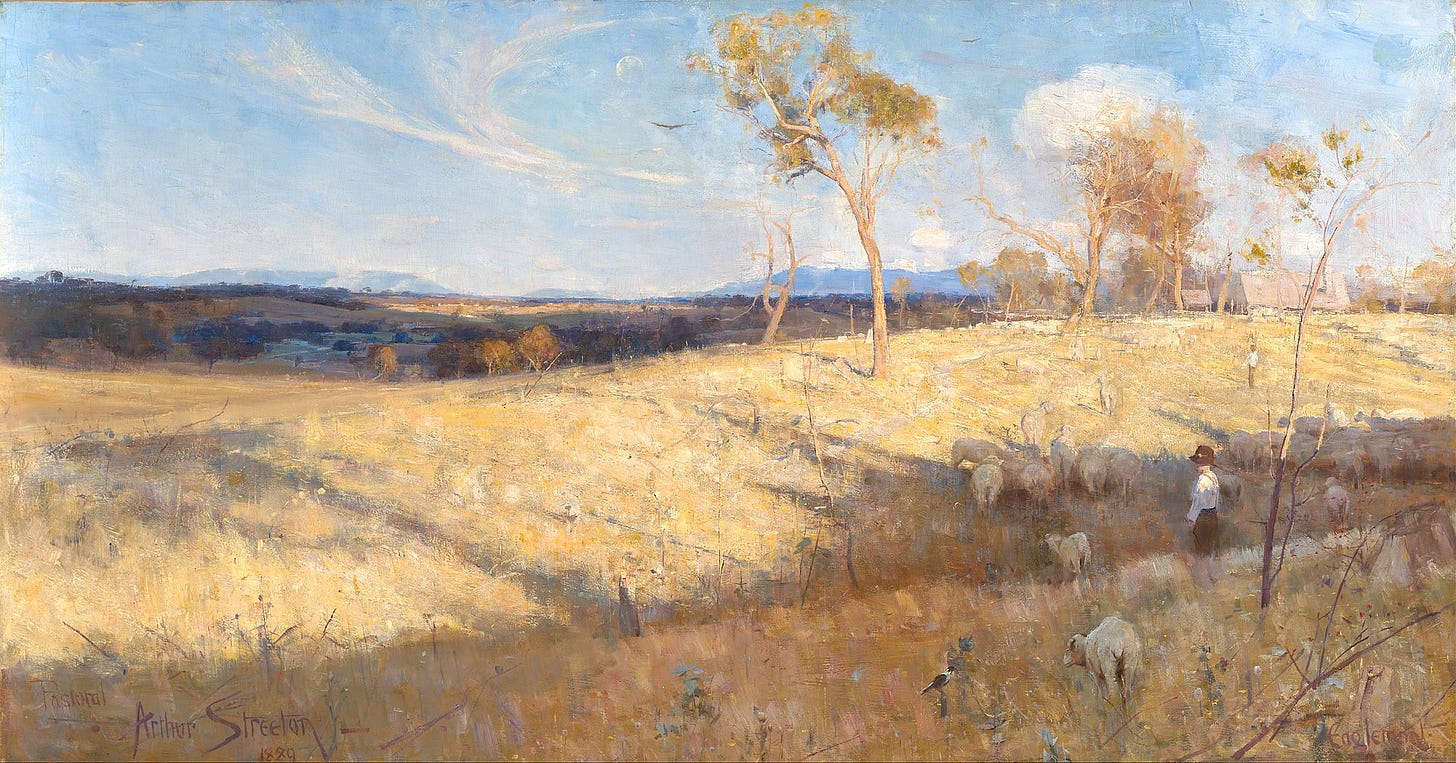
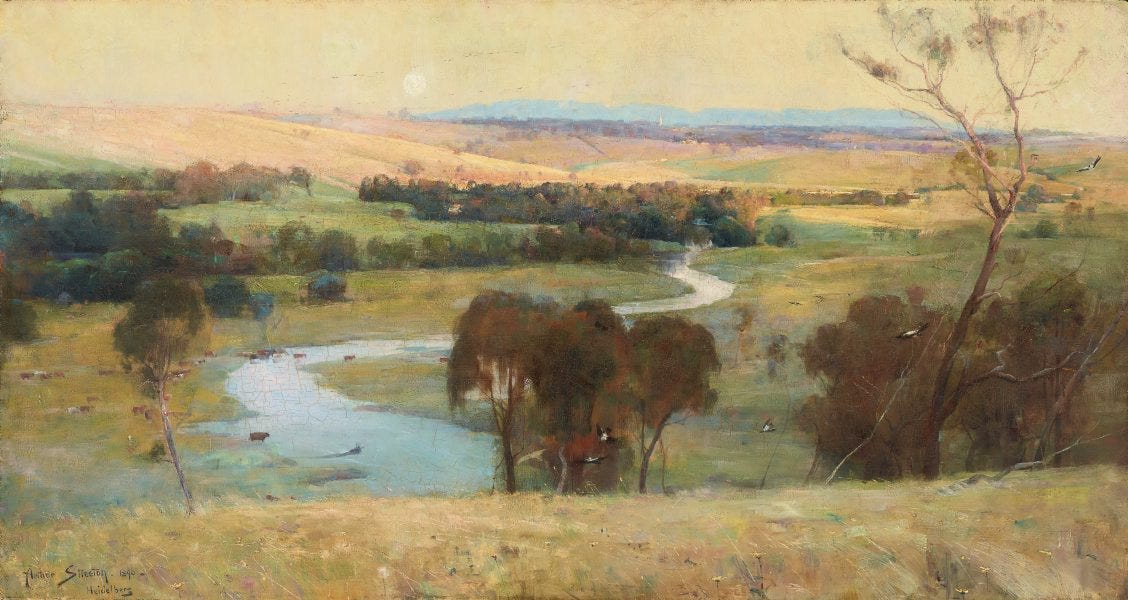
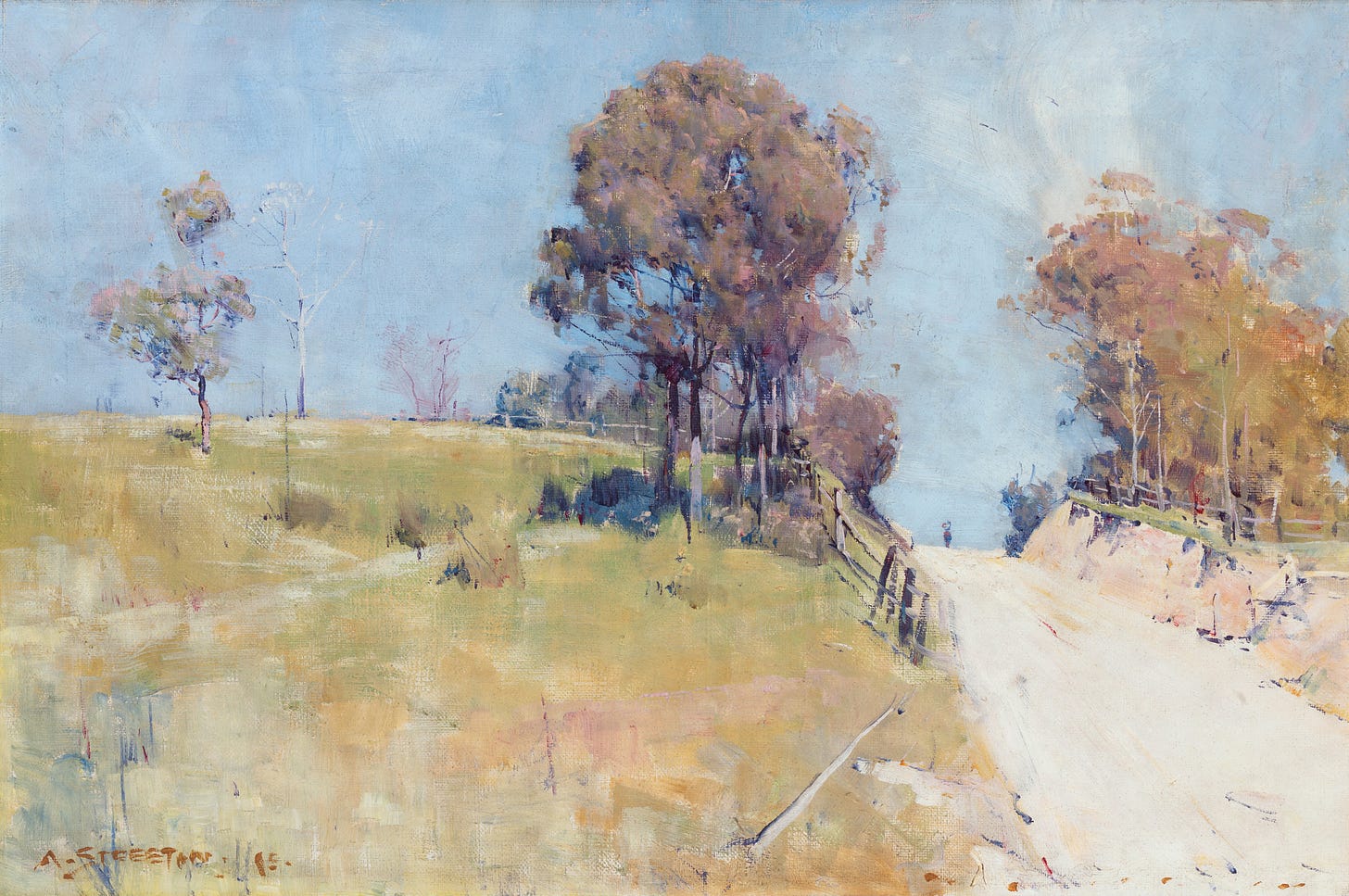
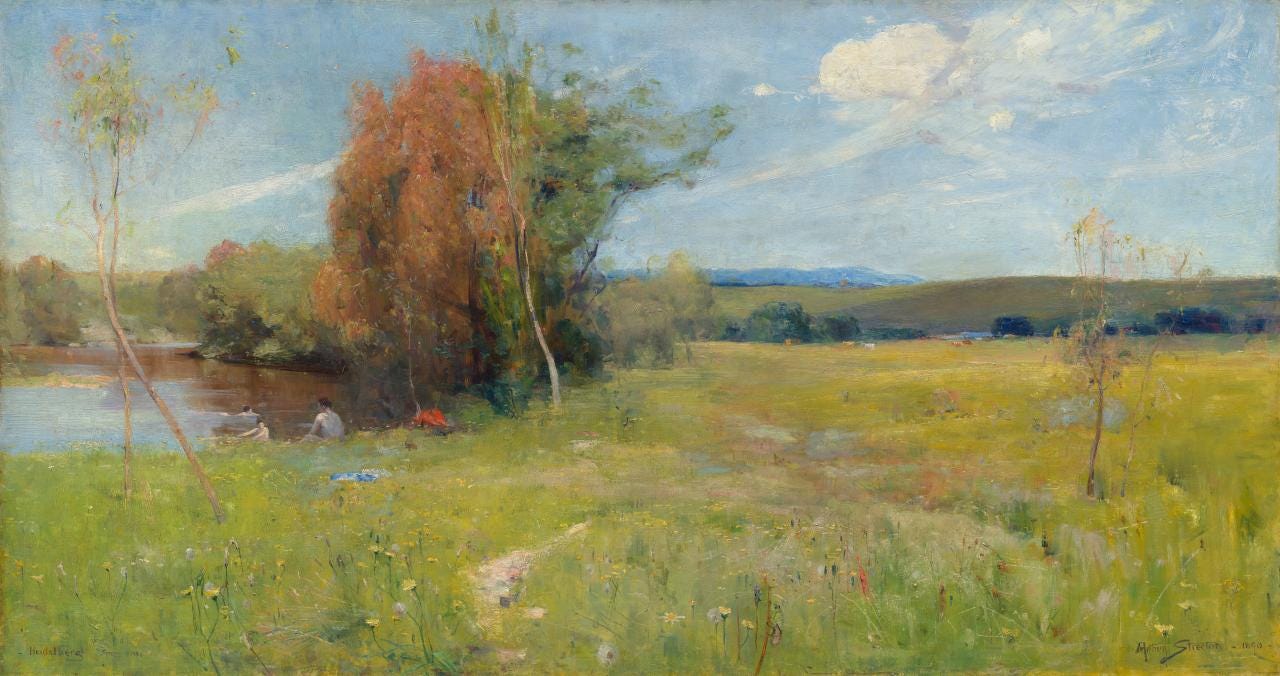
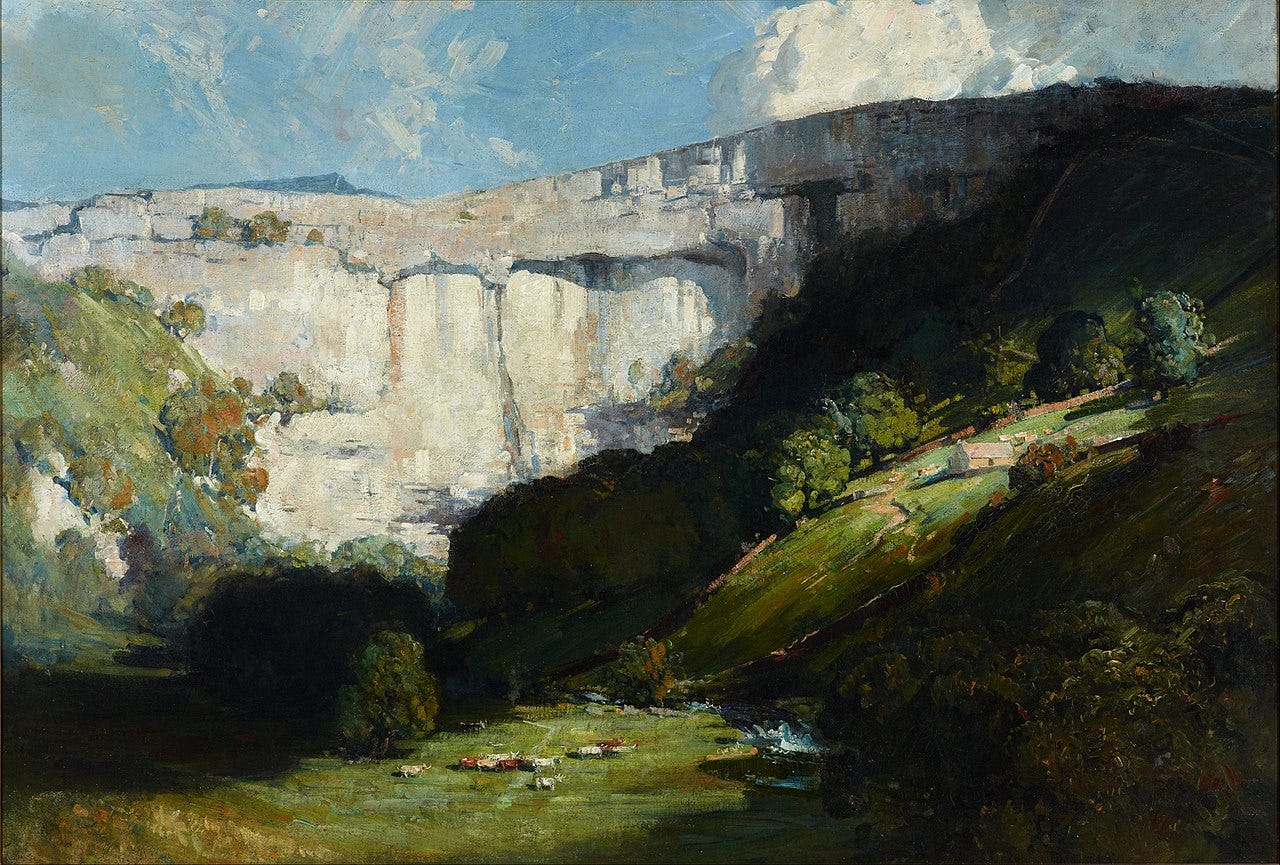
It seems to me that we find the same tendency in all the arts. It's a clubby snobbism, an elitism, to be able to say we enjoyed something utterly unenjoyable. In art schools, students aren't taught the mechanics of drawing, how to see, translate what the eye sees to two dimensions. What matters is impact, provocation, malaise. Modern music is incapable of transmitting any emotion but unease, because it uses only the sound combinations that the ear associates with horror films. The lyrical, the beautiful, the awe-inspiring, the wonderful is considered trite and superficial. Only the angst-ridden and shocking is valid. In poetry, we applaud the obscure, the smugly impenetrable, which as you say is only 'a feeling' which must never be more closely inspected or explained because that would be to diminish its cleverness. Poetry is no longer about communicating anything universal, it's an ego-trip, self-indulgence. Rhyme and meter explain, guide the reader towards an emotion, and create something memorable, often uplifting because we can relate to it. The purveyors of obscurity deny that accessibility. It's all about the artist. I can't see the merit in any of it, but thousands do. Maybe because it gives them entry to the select club of those who 'know'.
I've consider writing a piece entitled "Against Free Verse"—not because I do not enjoy free verse (when it is well done), but because I believe it should be the exception that proves the rule. Unfortunately it has become the rule, and has therefore made itself more obscure, easier to fake, and harder to enjoy. One needs clear rules to break. There is nothing innovative about the arbitrary. Consider that most of the visual "art" for sale at American Furniture Warehouse is abstract, and one can perhaps see that for all the power of Rothko or Pollock, the greater legacy of that movement is the proliferation of twaddle unworthy even of dentist office decor. I offer this as something of an analogue. The artist tries to capture "the look"; the poet tries to capture "the voice." The only joke is an inside joke, which nobody understands but everyone smugly defends.